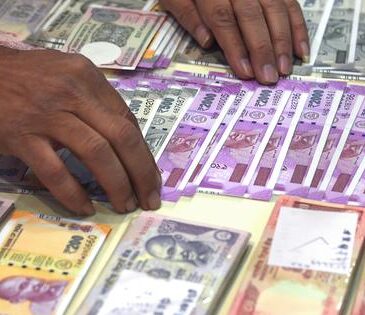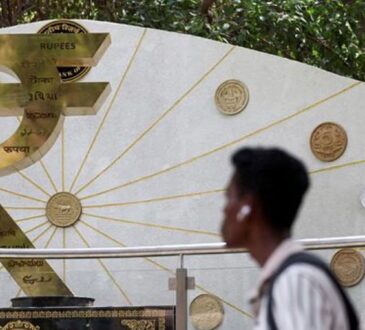Should the US Be Worried? – The Diplomat
A decade ago, a traveler from Singapore visiting Bangkok or Jakarta would likely rely on U.S. dollars or a global credit card to settle the bill. Today, things are changing. A Malaysian tourist in Thailand can pay for street food by scanning a QR code, with money instantly debited from their account in ringgit and credited to the vendor in baht. Such small conveniences are part of a broader, quiet revolt in Southeast Asia – a concerted effort by regional governments to reduce their reliance on the U.S. dollar in trade and finance.
For now, the U.S. dollar remains dominant in the region’s commerce. Between 80 and 90 percent of exports from Southeast Asian countries are invoiced in USD, reflecting the greenback’s long standing role as the default currency for pricing goods. Most regional currencies are also informally tethered to the dollar’s movements, and central banks stockpile dollars as reserves for stability. This dollar dependence has historically served Southeast Asia well by facilitating trade and investment. But recent events have exposed its downside and galvanized a push for change.
Economic Jolt and Geopolitical Risk
U.S. monetary policy can send shockwaves through ASEAN economies. The Federal Reserve’s rapid interest rate hikes in 2022-2023, for example, strengthened the dollar and weakened Southeast Asian currencies, fueling imported inflation and making dollar-denominated debts costlier. At the same time, U.S.-led financial sanctions – most notably the freezing of Russia out of the SWIFT payment network in 2022 – rang alarm bells across Asia. If a great power rivalry escalates, could Washington one day cut off access to dollars or payment systems?
Indonesia’s former President Joko “Jokowi” Widodo was blunt on this point: citing the Russia sanctions, he warned that global payment giants like Visa and Mastercard could be “a problem” and urged Indonesians to use domestic networks instead. Policymakers in Malaysia, Thailand, and Singapore have voiced similar concerns about over-reliance on the dollar. The message: to safeguard their economies, Southeast Asian nations want more autonomy in how they trade and transact.
Local Currencies and Regional Payment Networks
One prong of this quiet de-dollarization is a turn to local currencies for cross-border trade. In May 2023, ASEAN leaders meeting in Labuan Bajo, Indonesia, formally agreed to increase the use of local currencies in intraregional trade. They even floated the idea of a unified ASEAN currency framework in the future to facilitate this shift. In practical terms, several countries have already been laying the groundwork. Since 2017, Indonesia, Malaysia, Thailand, and the Philippines have developed bilateral local currency settlement arrangements to enable trade to be invoiced in their own currencies instead of USD. Those arrangements expanded to include major trading partners China, Japan, and South Korea. Real business is now being done in local money: Malaysia, for instance, has agreements with Indonesia, Thailand, and China to settle more trade in ringgit or other local tender.
None of these moves will erase the dollar overnight, but together they mark a strategic diversification. “When dollars are scarce or expensive, local currency settlement becomes a solution that allows transactions to continue,” explained an Indonesian economist, adding that the intent is to minimize reliance on the dollar, not eliminate it.
Another prong is building regional financial infrastructure that bypasses U.S.-centric networks. Under Indonesia’s leadership, ASEAN launched a Regional Payment Connectivity initiative in 2022 to link up national payment systems. The vision is an interoperable network of fast payments and QR codes stretching across Southeast Asia. In plain terms, this means a shopper in Singapore might use their phone app to pay a merchant in Malaysia or Thailand directly in their home currency – no need for Visa, Mastercard, or correspondent banks that route money through New York.
Early pieces of this network are already live. Singapore and Thailand have connected their domestic instant payment systems (PayNow and PromptPay), enabling real-time fund transfers with just a phone number between the two countries. Similar links now connect Singapore with Malaysia and Thailand with Malaysia, and more ASEAN members are coming aboard the scheme. By cutting out middlemen and using agreed exchange rates between central banks, these linkages make cross-border payments faster and around 30 percent cheaper in fees according to one estimate.
They also offer a degree of financial self-reliance. As the Monetary Authority of Singapore noted, such a system means fewer transactions flowing through U.S. payment giants that could be vulnerable in a geopolitical standoff. It’s no coincidence that after the Russia sanctions, Indonesia sped up plans for a domestic credit card network and instructed government agencies to ditch Visa and Mastercard for locally-issued cards to “be more secure” from geopolitics. Southeast Asia’s new payment rails serve a similar purpose on a regional scale.
Enter the Dragon: Yuan and Digital Currency Alternatives
The quiet revolt against the dollar isn’t happening in isolation – China is actively encouraging it. As the U.S. wields financial power, Beijing is positioning the yuan as an alternative pillar for the region. One major initiative is the Cross-Border Interbank Payment System (CIPS), China’s answer to SWIFT. CIPS allows banks to transfer funds internationally in yuan, and it’s been growing quietly. As of early 2022, over 1,280 financial institutions across 103 countries had connected to CIPS. The system processed about 80 trillion ($12.7 trillion) in yuan payments in 2021, a 75 percent jump from the previous year.
By comparison, SWIFT handles several times that amount per month, so CIPS is not a rival yet – but its network is spreading into Southeast Asia. For countries that trade heavily with China (now ASEAN’s top trading partner), using CIPS and yuan invoicing is a logical step if they wish to avoid the dollar. Indeed, more deals are being struck in yuan: China now regularly settles oil and coal trades with Indonesia in yuan, and countries like Myanmar and Laos are increasingly using yuan for border trade.
Beijing’s other play is digital currency. China’s central bank has been piloting the e-CNY, or digital yuan, which could one day enable direct currency exchanges without Western banks in between. The scale of China’s digital currency rollout is already significant – by mid-2023, over 120 million digital yuan wallets had been opened, and e-CNY had seen around 1.8 trillion yuan ($250 billion) in transactions since launch. So far the digital yuan is mainly used domestically (it accounts for only about 0.16 percent of China’s cash in circulation). But China has begun testing cross-border digital currency payments with partners in Hong Kong, Thailand, and the UAE as part of the mBridge project.
It’s not far-fetched that, in a few years, a Thai firm could pay a Malaysian supplier using digital yuan tokens over a blockchain-based network – completely outside the traditional dollar banking sphere. Such technology could significantly reduce the U.S. ability to monitor or control international flows. Little wonder the U.S. Treasury has been studying the implications of foreign digital currencies on sanctions and dollar usage.
Should Washington Worry?
In the short term, the dollar’s hegemony remains secure. The numbers speak clearly: the greenback still makes up nearly 60 percent of global foreign exchange reserves and is used in almost half of all international payments by value. By contrast, the Chinese yuan accounts for only about 2-5 percent of global reserves and payments.
Even within ASEAN, the U.S. dollar is still the default for big-ticket commodities like oil, natural gas, and electronics exports. None of the regional arrangements ban the dollar; they merely give businesses an option to use local currencies. In practice, many traders still feel more comfortable pricing in a universally accepted currency. As one analyst noted, there is no obligation for exporters or importers to drop the dollar under the new ASEAN frameworks – it’s voluntary, and many will stick with what they know. This means the dollar’s network effect (everyone uses it because everyone else uses it) will not disappear overnight.
U.S. officials are, at least publicly, unconcerned. Then-Treasury Secretary Janet Yellen said in December 2024 that she sees no serious threat to the dollar’s reserve-currency status, given that no other currency has the depth and breadth of usage globally to displace it. For now, that assessment is accurate: King Dollar’s throne isn’t toppling in the near future.
However, the quiet revolt underway in Southeast Asia is not insignificant. It signals a growing desire among emerging economies to insulate themselves from U.S. financial leverage. Over time, incremental steps can accumulate into significant shifts. If Southeast Asia’s experiments in de-dollarization prove successful – if more trade is routinely settled in rupiah, baht, ringgit, or yuan without a hitch – it could inspire copycats in other regions. Each percentage point that the dollar loses in global market share, whether in central bank reserves or trade invoicing, ever so slightly erodes Washington’s economic influence. The U.S. benefits enormously from the dollar’s dominance: it makes sanctions biting, it lowers U.S. borrowing costs, and it gives Washington unrivaled visibility into global transactions. Those advantages won’t disappear overnight, but they may be chipped away at the margins.
In Southeast Asia, a more multipolar currency system is slowly taking shape. The U.S. need not be alarmed just yet, as the dollar will remain the backbone of the international financial system for the foreseeable future. But neither can it be complacent. The innovations in ASEAN – from local currency trade pacts to digital payment links – are planting seeds of an Asia less beholden to the greenback. The quiet revolt against the dollar is still in its early days. Whether it stays symbolic or gathers force will depend on how both Asia and the U.S. navigate the new terrain of global finance.
For Washington, it would be wise to pay attention: today’s modest regional initiatives could, in time, grow into a collective challenge to dollar dominance if U.S. policymakers ignore the concerns driving them. In that sense, Southeast Asia’s moves are a warning shot that the era of unquestioned dollar supremacy is gradually drawing to a close.




